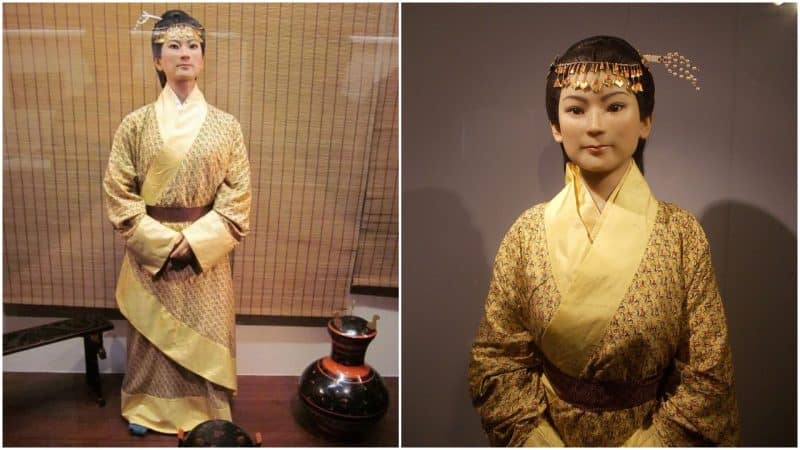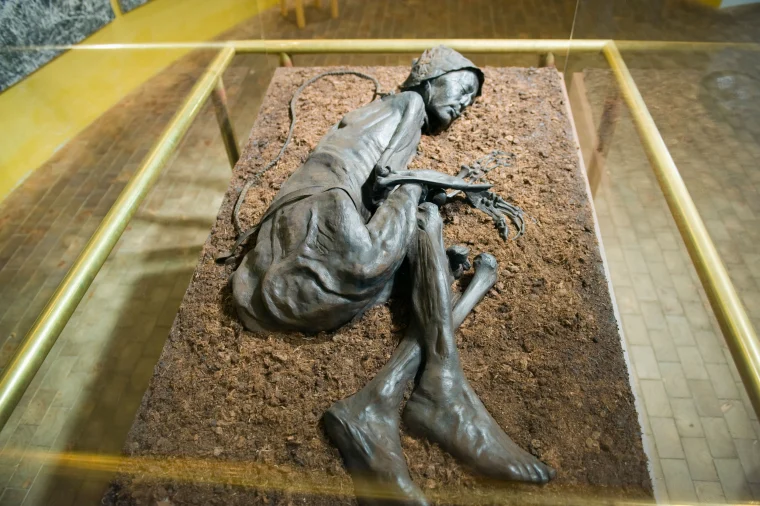This is the story of Xin Zhui, also known as Lady Dai, the best-preserved human mummy ever discovered.
Imagine unearthing a tomb untouched for over two thousand years, only to see a woman with supple skin, her original hair intact, and even traces of blood in her veins.
Lady Dai was the wife of Li Cang, the Marquis of Dai and Chancellor of the Changsha Kingdom, during the Western Han dynasty of ancient China. She died at age 50 due to a cardiac arrest.
In 1971, near Changsha, China, workers stumbled upon Lady Dai’s tomb. She looked so real and alive. However, upon exposure to air, Lady Dai’s body began to deteriorate. Sadly, the images we see today don’t capture her initial pristine state.
Despite being over 2,000 years old, her body defied expectations. Her skin was soft and moist, with her hair—even her eyelashes and eyebrows—still present. Scientists believe the airtight tomb, meticulously constructed layers deep underground, played a crucial role in this preservation.
Further examination revealed all her organs were intact, and her veins still held Type-A blood. Shockingly, these veins also showed signs of a heart attack, the likely cause of her death.
Another surprising thing was melon seeds that had not yet been digested were found in her stomach, suggesting it was her last meal.
Further analysis revealed a not-so-healthy lifestyle. Excess weight, high cholesterol, and liver disease painted a picture of a life of luxury without moderation, ultimately contributing to her untimely demise.
Inside her tomb, archaeologists found a treasure trove of artefacts—makeup, clothing, lacquerware, and even wooden figures that signified her domestic helper. These were able to see how life was during China’s Han Dynasty.
Despite the tragic end, Lady Dai’s story is a testament to the excellence of ancient burial practices, the search for immortality and a reminder that overindulgence can lead to an early death.


